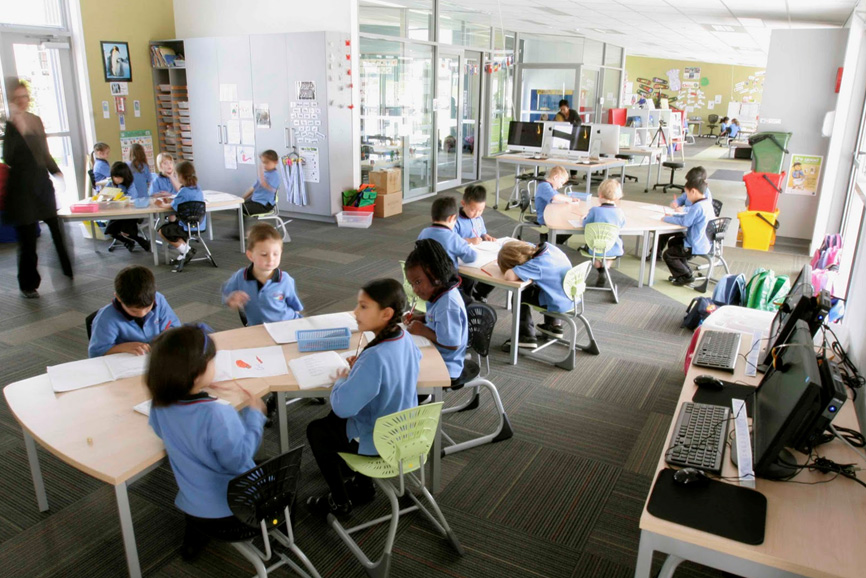 Introduction
Introduction
Robbins (1995) defines networking in schools as: “a confidential process though which two or more professional colleagues work together to reflect upon current practices; expand, refine and build new skills; share ideas; conduct action research; teach one another, or problem solve within the workplace”. Improving practice in the field is a way that schools can enhance the skills of the teachers. Sharing information between peers, the experience and the issues that everybody finds in the work place, can help to create a balanced way of working. That means that teachers, Directors and psychologists should share their experiences so as to build the proper environment at work. Personal development is one of the most important issues that any teacher or professional can find in the educational field. As we know, the collaboration between individuals is not always prevalent in schools, although it is a good way to work together. For this reason, we invite professionals to develop activities which embrace mutual teacher support, implicit in coaching, mentoring and peer-networking relationships, and needed to ensure high quality personal and interpersonal skills, mutual trust, confidence and respect.
When teachers face challenging circumstances in several ways, they cannot handle the negative emotions that come up as consequence of their daily activity. Then stress, hopelessness and stagnated practice can take over. The tolerance level of an individual can decrease, as well as the personal commitment to facing any kind of challenge.
In thinking about team work in schools, it is important to understand objectively the issues that teachers face daily and the stresses within the workplace environment. Creating a network to support teachers is paramount to solving these problems in the most effective way. How to avoiding conflicts, and learning to become more aware of the other’s feelings and how to interpret the others expressions.
In building cooperative and supportive relationships we aspire to develop “authentic relationships”, not just among teachers but also between teachers and students. This aim could be achieved when teachers show positivity towards all the students; when teachers behave consistently and fairly, and in doing so, build student confidence. It is important for teachers to realise and demonstrate that communication with student means ‘talk as much as listen’ and, ensure that classrooms are places where students can experience learning without fear of being punished.
Strategies between teachers
There are several structures, methods and systems that make up a successful collaboration between and among teachers. However, any kind of collaboration has to generate symmetrical communications and trust from all members of the group. If these two requirements are achieved, the collaboration will: improve effective engagement and social relationships, the quality of thinking, staff morale and reduce the workload. The management of the centre has to be involved in all the process and all the groups. The strategies will not be successful without the consent of all partners.
- The study group approach
These groups are a great way to grow professionally. Support groups are created by the teachers themselves, within the school. These groups develop to give teachers the opportunity to respond to a huge range of needs including both teachers and students. The group is characterised by the creation of small groups of colleagues from the same workplace, who work together on the issues exposed by them. Solutions are developed using the combined knowledge of the whole team.
- Co-Teaching
Is formed by, two teachers working together in the same group-classroom. Usually one teacher has the main responsibility while the assistant teacher is more focussed on supporting the diversity in the classroom or helping individuals and observing particular behaviours. Teachers, as well as other colleagues, are learning from their interactions. This collaboration becomes an essential tool to allow the teachers thoughtful practice plus evaluation. Co-teaching is an important resource to reach the maximum effectiveness in teaching.
- Mutual Observation
This methodology consists of observing another colleague delivering a lesson, or an activity. This situation can happen in natural situations, or in the classroom or through video recording. The objective of the observation is to explore another way of working and in the same way, to know our own way of working from the view of another professional.
Conditions to promote collaboration in schools
(Ainscow & West, 2006)
- Providing incentives for change and encouraging a sense of common purpose within and between school communities.
- Collective responsibility for the performance of all schools within a group or network.
- The commitment of the management and the experienced teachers.
- Identify the shared priorities to improve with the common feeling as relevant.
- External advice (consultants, advisors, counsellors) with credibility and commitment for improving schools.
- Confidence and support from the local authorities towards the collaborative approach.
 Activity
Activity

Objective: In this activity we suggest that teachers develop a co-teaching activity. Teachers have to agree with another colleague about a joint working group in one particular area, workshop or set up a mutual observation.
Contents: To develop the activity, it is suggested that teachers implement the contents using the following scheme:
- Elaborate a list of the objectives and rationale of the co-teaching activity.
- Make an agreement about the duration of the collaboration.
- Write a detailed description about the cooperative principles in the activity or the observation if you agree to do in this way. (Roles of teachers, rules, communication..)
- Agree the evaluation criteria for outcomes achieved.
- Make an assessment of the results. (Individually and put in common to compare)
Material:
- Learning Environment
- Diary (elaborate a daily record of the collaboration)
 Case studies
Case studies
They achieved this through a two-pronged approach:
- continual staff training and development, both, vocational and professional;
- and visiting other facilities and schools to learn from other outstanding professionals/teachers/colleagues.
Staff willingly committed to both at significant personal cost in terms of finance, time and energy. Five of the team have now obtained Early Years degrees and two also have Early Years Professional status.
All staff attend courses, covering a wide range of issues in early years practice. As well as this, when possible, staff attend training sessions together, even at weekends, as experience has shown that this helps them to reflect on what they do that works, as well as discuss what they could enhance in their practice. Simple changes improved the children’s learning quickly, for example: “introducing a child-led café style snack time and continuous free-flow learning and play between all rooms, and outside”.
Routines are supportive rather than interrupt children’s’ concentration and engagement. There is a better balance of adult and child-initiated activity, with focused activities clearly linked to assessments of individual and groups. Flexibility ensures all staff have both time to lead group work and reflect, plan and prepare activities and resources.
Questions to reflect on:
- What are the key factors that made this project successful?
- What impact did it have on pupils and on teachers and how can it be explained?
- How did the balance of the learning processes change throughout the project?
- Do you consider it a useful approach to increase pupils` engagement? Why/why not?
